- Tesla upgrades the Model 3 Performance for 2024 as part of the comprehensive "Highland" update.
- It has more power, a revised Track mode and adaptive dampers.
- We evaluated the 2024 Model 3 Performance on- and off-track; here are the results.
2024 Tesla Model 3 Performance: Full Rating Results
Lamborghini performance at a fraction of the price
Tesla gave the Model 3 a significant refresh for 2024 — our younger staffers might call it a "glow-up" — that extends throughout the range, but the Model 3 Performance's upgrades are the most notable. It has more power than the previous version (a 32% increase in peak power, says Tesla), revised Track mode logic and, for the first time on a Model 3, adaptive dampers. But do all these enhancements translate to a better car? To find out, we pushed the Model 3 Performance to its limits on our test track, then drove it on real roads for a comprehensive evaluation of all aspects of the electric hotrod.
Edmunds tests and evaluates hundreds of cars each year to provide comprehensive, unbiased, and data-driven vehicle insights, ensuring you are well informed during your car-buying journey. The rating below compares the 2024 Tesla Model 3 Performance — the Model 3 Performance we bought, in fact, for our long-term test fleet — against its direct rivals in the performance electric cars category, with section scores contributing to the overall score. Section scores are determined by the value of their subsection scores, which evaluate individual aspects of a vehicle. The overall score and section scores are always published on a vehicle page; subsection scores that provide greater detail are presented here publicly for the first time.
This rating was written by Brian Wong and edited by Jonathan Elfalan.
Am I Ready for an EV?
- EV ownership works best if you can charge (240V) at home or at work
- If you can’t charge at home, charging at a charging station could take at least 10x longer than at a gas station
- Adding a 240V home charging system could cost up to $1,600 or more
Performance: 9
Calling the Model 3 Performance fast sells it short. At our test track, it ripped from 0 to 60 mph in just 3.0 seconds. That puts it in some rarefied air and matches vehicles like the Porsche 911 Carrera 4 GTS and the Lamborghini Huracan STO — cars that also cost several times more than you'll pay for the Tesla. Its acceleration pours on suddenly but is delivered smoothly, and the Model 3 Performance doesn't run out of breath either, pushing through the quarter mile in 11 seconds flat.
Braking distances are good but not great. It stops from 60 mph in 109 feet (1 foot better than the Ioniq 5 N), but the brakes do get very hot very quickly when you're pushing the sedan on a track. They're more than ample for a canyon or a spirited drive, but for a track day or an autocross, you'll want a brake upgrade. Driven enthusiastically around corners, the Model 3 Performance rolls a noticeable amount as the weight transfers, but overall it's an easy car to drive and control. If the handling and tire grip were improved a bit more, this car could really be a superlative sport sedan.
Acceleration: 10
Tesla claims a 2.9 second 0-60 mph time with rollout and we got within a tenth of that at the test track from a standstill, at 3.0 seconds. (Edmunds' times do not use rollout.) That's ridiculous speed. Everything else that we've tested that goes from 0 to 60 in that time costs at least double. No fancy launch control needed either — you just mash your foot and off it goes. We got the same times running it in Track mode and in regular mode with the acceleration turned up to "Insane." And it doesn't run out of breath; after that initial Tesla jolt off the line, the speed builds all the way up into the triple digits with ease, completing the quarter mile in 11.0 seconds and trapping at 123.7 mph.
Braking: 8
We recorded a 60-0 mph braking distance of 109 feet, 1 foot better than Ioniq 5 N and 15 feet better than the Model 3 Long Range AWD. Brakes feel strong once you get into the pedal, but we would prefer a touch more grab at the top of the stroke for more confidence. You're really only reaching for the brake pedal, though, if you're pushing the car given how well dialed the regenerative braking is. The regen settings in the Model 3 Performance are adjustable in Track mode, which is something the standard car doesn't get. In any other drive mode, the regen is locked in the one-pedal drive setting. Brakes do get quite hot after a few hard stops, which you can monitor on the screen while in Track mode. If you're running hot laps, the limiting factor will be the brakes because of that heat.
Steering: 8.5
The steering has three different weight settings and feels quite heavy at its firmest. We do wish there was a setting for feedback, though, because it's lacking through all three modes. It's not something that will bother you on the streets or even on a canyon road, but on a track there's a bit of vagueness at the limits of grip that's unsettling and something that the Ioniq 5 N and Porsche Taycan both do a better job of. The steering feels quick but less darty than in previous Teslas. As understeer happens, you'll feel it from the seat before the wheel, which leads me to ...
Handling: 8.5
Trends toward understeer in corners but doesn't come without warning. It never feels unexpected, and when it shows up, you can actually use the accelerator to get the car to rotate slightly and put it back on course. The adaptive suspension firms up quite noticeably in its Sport setting, but body roll is still quite noticeable. If you go over bumps on the handling circuit, the Model 3 Performance doesn't get as unsettled as our old Model Y Performance did; it's stiff but still a bit pliant. Grip limits are a touch low for what we expect from a Performance model. If the handling dial was turned up a bit more, this thing would be even more of a delight.
Drivability: 9.5
Day-to-day drivability is excellent and nearly on par with the Model 3 Long Range, which is a serious compliment. The Chill driving mode is perfect for most of the time, but hit a button and — boom! — you're sitting in a rocketship once more. The one regen setting outside of Track mode is excellent, and even in Track mode I left the regen dialed up because it's tuned so well.
Comfort: 8.5
The Model 3 Performance's front seats have additional side bolstering to help hug you a bit tighter in corners. They're well cushioned and comfortable and come with heating and ventilation as standard, but we think they would benefit from even more bolstering because you do still slide around a bit in spirited driving. The rear seats are pretty comfortable, though they are a bit low to the floor, so taller passengers will have their knees in an elevated position. In our testing we found the Model 3 Performance's adaptive suspension to be on the stiffer side, but it does a pretty good job of sorting out road imperfections, making it livable as a daily driver.
Our scoring could be even higher here but the climate control system doesn't have multiple zones for temperature adjustment like you'll find on most other cars. Also, the touchscreen-based adjustments for the air vents are distracting to use while driving.
Seat comfort: 8.5
The seats are a step up from the previous model across both rows. For one, they come standard with perforation and ventilation, just like on the Long Range car, but more bolstering to keep you in place. That said, the seats could benefit from even more aggressive bolsters, because you still slide around a bit while cornering. For sports seats they are quite comfortable and were great for the 300-plus mile range test. Cushions have a good balance of firmness and give. The rear seats are also comfortable and well cushioned, though they do sit a bit low so longer-legged folk will have a higher knee position as they usually do in other electric vehicles. The completely flat floor pan, however, frees up space for all rear passengers, particularly the middle seat.
Ride comfort: 8
Just a touch less comfortable than the standard car because it's stiffer in all of its adaptive suspension settings (even the softest one). But unlike the Model 3/Model Y Performance variants of old, the ride isn't punishing. Stiffer to be sure, but the impacts from potholes and road seams actually get ironed out, instead of feeling like they run straight up your spine. For the performance you gain, it's a good trade. It also helps that Tesla didn't go with a low-profile tire so there's plenty of sidewall, naturally providing more cushion.
Climate control: 7.5
I generally dislike touchscreen vent controls, but I think Tesla does them the best. They're relatively easy to adjust, and the climate control seems to work more effectively in this model for some reason, at least when it's not extremely hot outside. I appreciate the fact that ventilated and heated seats are now standard, and the subtle heat from the steering wheel is better than nothing. I also really like the new rear seat control screen, which allows passengers to adjust the vent position and fan speed, similar to the front controls. What's surprising is that this is still essentially a single-zone system, which means you can only select one temperature for the entire cabin. You can control the fan speed and whether or not the vents are open, but the position of the vents can sometimes make the system a little loud.
Noise and vibration: 9
There have been significant improvements in cabin quietness thanks to the use of acoustic glass and better sound deadening throughout the vehicle. There are no noticeable squeaks or rattles that we experienced in previous brand-new Teslas. It seems that the overall quality has greatly improved in terms of tolerances and how everything fits together. Road noise still plays a significant role depending on the road surface. On smooth roads, the experience is very peaceful and quiet. However, textured surfaces tend to produce a lot of low-frequency noise, but overall the cabin is well insulated.
Interior: 8
If you're savvy with touchscreens, using the Model 3's main display for nearly everything will come pretty naturally. But those less keen on tech will likely find it hard to remember where all of the controls are and wish for real buttons or control stalks. The touchscreen drive selector isn't as annoying to use as we expected, but the steering-wheel-mounted turn signal buttons are just plain odd.
On the upside, the generous adjustability of the steering wheel and driver's seat allows for an optimal driving position and excellent outward visibility. We also like the Model 3's roomy cabin. There's plenty of headroom and legroom up front and the rear seating area is also pretty sizable.
Ease of use: 7.5
If you're touchscreen-savvy, which most of us these days are, then the Tesla controls will mostly make sense once you get acquainted. There are still some things like the turn signals on the steering wheel that have been added in lieu of a stalk, which I don't like even after a few weeks of practice. It might be something I eventually get the hang of, but it's definitely more distracting to use at the outset and not a better solution. I wasn't able to find everything I wanted by just moving through the menus and had to do a search for some things. Once you get used to how Tesla lays out the controls, you'll appreciate the functionality more. Things like initiating the cruise control and how the turn signals automatically cancel once it senses that you switch lanes are pretty cool. I don't like having to poke through the menus to adjust my steering wheel or mirrors, even though it helps minimize the number of parts. The backseat screen earns extra points due to the ability to direct the air vents, change the fan speed, control the seat heaters, and move the front passenger seat. Pretty cool stuff there. Let's also not forget that Tesla pioneered the get-in-and-go process (no ignition or start button), which is still one of the best elegant executions.
Getting in/out: 7.5
The doors open wide, but there's a knack to the nifty push-in, reverse-pull door handles that not everyone will like. The sills are a bit high and require a wee bit of foot lift, but the roof doesn't present much of a ducking problem. Front and rear door openings are virtually the same on all points.
Driving position: 8.5
I found the seating position to be very comfortable, and there's a huge amount of steering column adjustment, which is rare these days. I really like the feel and grip of the steering wheel rim, and the view out is commanding. However, I would like more of a gap between the brake and dead pedal for occasional leg stretches. All the controls are within easy reach, but I still wish for either a head-up display or a small gauge cluster so I wouldn't have to take my eyes off the road to look at the center screen for everything.
Roominess: 8.5
The Model 3 is really roomy for a compact car, especially in the rear seat. No adult will probably fit back there comfortably if you have two car seats installed, but it does better than a lot of cars. The floor in back is a bit high, so your knees are higher than usual and because there is limited space under the front seats you can't cheat your toes under there, which reduces the legroom. There's plenty of space overall in the front, especially with the thin glass ceiling providing good headroom. The overhead roof structure is closer to the middle of the car, which maximizes headroom for the rear passengers. A really clever design.
Visibility: 9
The Model 3 has excellent visibility with a very low hood line and mirrors that are mounted lower on the doors. And even though the windshield pillars are a bit chunky, they are narrower in the direction that matters to minimize obstruction. The view out of the back is excellent as well because you don't have a roofline that cuts into your view (the rear roof structure sits ahead of passenger heads). It's just a tint line that forms the cut-off point, and you can see everything back there. The headrests stay out of the way, and even though they are not adjustable, they don't obstruct anything important. The sideview and rearview cameras are helpful, and the infrared-looking image that supplants a true 360-degree camera works pretty well. Blind-spot cams and LED indicators are great for safety redundancy.
Technology: 7.5
Tesla's infotainment system has a few standout features, but some things are ripe for improvement. The Google-based navigation display looks great on the 15.4-inch touchscreen and is user-friendly, though it can lag in updating when you're driving in areas with poor cell service.
You'll love cranking your favorite music in the Model 3, especially with the premium 17-speaker system that's standard on the Performance model. It offers an immersive listening experience that reveals new dimensions in familiar tracks. However, the lack of integration for common smartphone features like Apple CarPlay or Android Auto, and the inability to access an iPhone's music library directly, is a bit of a bummer if you're someone who likes to transition seamlessly from phone to car.
On the upside, Tesla provides a nice upgrade for rear passengers with the addition of a second screen. Like the front screen, you can use it to stream videos from Netflix and YouTube or play a small collection of built-in video games. Two USB-C chargers also keep mobile devices juiced up. The voice command system generally works well, and you can use it for things like opening the glovebox or adjusting the climate temperature (though it will only set the temp to the nearest even number).
Tesla's Autopilot system, which bundles a variety of driver assist features, generally works well, though we have found that it can be overactive when braking or too aggressive when accelerating. Its ability to automatically steer on city streets and stop for traffic control lights and signs (if you have the Full Self-Driving option) is a neat trick, but we don't think it's trustworthy or reliable enough to fully allow you to relax while driving. It's hard to justify the cost, especially when you're just paying to turn the feature on.
Audio and navigation: 8.5
The large Google-based navigation display is beautiful and easy to control. Sometimes the map can be slow to update, which leaves you navigation-less in areas with spotty service. We encountered such an area on our standardized driving route. Traditional nav systems are more robust, but since this system is Google Maps-based, you have the option to send directions to your car through the Tesla app, and it's pretty seamless. I also find the map relatively easy to use and the navigation mostly aligns with what Google would map. A pretty solid alternative to having Apple CarPlay or Android Auto directing you. An upgraded 17-speaker audio system is standard on Long Range models. As far as audio sources, there's FM, HD and internet radio, but no AM or satellite radio. The audio system is quite impressive to my ears (I'm no audiophile), especially with the immersion experience turned up all the way. I heard sounds in spots that I haven't heard in songs that I listen to all the time.
Device integration: 6
Tesla lags far behind in this area. There's no Apple CarPlay or Android Auto, but we're even more disappointed that an iPhone's music library doesn't even display on the screen when plugged in via the USB port; those are for power only. It's Bluetooth streaming audio or nothing — a huge hassle. Tesla has recently added apps like Netflix, which act as a substitute for certain smartphone projection features. Kudos to the wireless chargers; they work better than those on a lot of other vehicles recently tested. Two USB-C ports in the back are charge-only, but the addition of a rear screen also helps keep backseat passengers entertained with videos, games and control of the front passenger seat position.
Voice controls: 7.5
Voice controls are fairly basic here compared to industry standards. The system will not wake upon command; you have to press the voice recognition button. Commands aren't all that advanced, but you can open the glove box, navigate, and change the temperature all using natural language, and it processes these commands rather quickly, too. One thing worth noting is that the system seems to only recognize even numbers for temperatures so if you say an odd number, it'll change it to the nearest even number. (If you say 75 degrees, it'll do 74 or 76 via voice, even though you can set 75 manually.)
Driver aids: 7.5
I generally like Tesla's driver aid suite, but I find the so-called Autopilot to be a bit jumpy at times. It brakes unnecessarily and accelerates aggressively in slow traffic, which can be unsettling. I remember there used to be a setting for aggression, but it seems to have been removed (the wonders of OTA updates!). However, I do appreciate the system's ability to recognize and display various elements in the virtual car view. I particularly like the feature that identifies stoplights and stop signs. Nonetheless, I wish it had a full surround-view camera instead of the virtual one, which produces radar-like images.
Storage: 8
The Model 3's trunk can hold far more than you'd expect. Besides the trunk space, there's a surprisingly deep well under the trunk floor that contributes to a whopping 21 cubic feet of cargo space behind the rear seat. The rear seats also fold virtually flat and the opening between them is quite large. Another advantage the Model 3 has over most other mainstream EVs is a frunk that offers a usable 3.1 cubic feet for a total of 24.1 cubic feet.
Storage space for small items is generous. There's a decent-size center console armrest and a deep compartment ahead of the cupholders. We also like the door pockets, which can hold water bottles and are lined with a felt-like material to help minimize rattling sounds from stored items.
The Model 3 isn't the best if you have young children. The car seat anchors are tucked tightly between the seat cushions, so it can be a challenge to get your car seat anchors in there. But thanks to the legroom available, even rear-facing car seats will fit behind an average-size driver.
Cargo space: 9
The Model 3 is a sedan with a trunk, but it's nearly as commodious as a hatchback. The 3's trunk is broad, but there's also a deep well under the false floor. Tesla updated the dimensions, with the space going from 12.3 cubic feet in back to 21 cubes. The rear seats fold utterly flat, and the aperture between them is quite large. In a pinch, you could actually sleep quite comfortably. The one advantage the 3 does have over most other mainstream EVs is a frunk, which is a usable 3.1 cubic feet for a total of 24.1 cubic feet.
Small item storage: 8
Other Tesla models come up short in this area, but not the Model 3. It has a decent-size center console armrest, and because it doesn't have a traditional shifter, or even turn stalks, it has another deep and soft-lined storage compartment ahead of the central cupholders. There are decent-size door pockets, felt-lined for quietness, with molded bottle holders too. The glove box is pretty small though, but I like that it has a magnetic catch instead of a latch. Just wished it closed a little more softly — it slams shut every time.
Car seat accommodation: 7
The legroom for the rear seat allows for a decently large rear-facing seat to fit. LATCH anchors are pretty hard to access, however, as the cushions are tight and you really have to work to locate them. The top tethers, by comparison, are way easier to locate and access. Seat width is decent for a compact car, but having two car seats in the back doesn't leave a lot of space for an adult in the middle.
Value: 9
The amount of performance you're getting in this sedan is astonishing. To match this level of pure speed and acceleration would cost you well into the six figures, unless you want to jump up a class in size and go for a Model S Performance. The latest Model 3 also has a nicely trimmed cabin. Our test car had no build quality issues.
The Model 3 used to come with an assortment of charge cord options, but now it only comes with an adapter for connecting to a non-Tesla charging cord. Thanks to Tesla's extensive nationwide network of quick-charging Supercharger stations, long-distance trips are easy.
The Model 3's warranty is comparable to other luxury electric vehicles. It comes with four years/50,000 miles of basic coverage and eight years/120,000 miles for the battery and drive unit, with a guarantee of 70% battery life remaining during the coverage period.
Build quality: 8.5
The quality has improved significantly in this model. Although the interior may not be as high-end as some other luxury cars, it feels sturdy and looks quite elegant. The seats and armrests even have French stitching and plenty of padding. It really feels like your getting your money's worth here. I can't find any major panel gaps or obvious misalignments; everything seems to be put together well and fits properly.
Cost: 9
Without any options and before taxes and fees, the Model 3 Performance has an MSRP of $54,990 so it qualifies for the full federal tax credit (as of this writing). But that means if you add anything to it, even a different paint color, it pushes it over the limit and bye-bye tax credit. For the speed and power it offers, though, it's a bargain in some ways with or without the credit. Though it still annoyingly lacks proper smartphone integration, Tesla has added premium features like ventilated seats, a heated steering wheel, ambient lighting details, and much nicer interior fit and finish. The cost of the Full-Self Driving beta has lowered to $8,000, but that's a box we still wouldn't check.
Range and charging: 9
The Model 3 Performance has a touted range figure of 303 miles. It went a bit farther on the Edmunds EV Range Test, covering 306 miles in total. That's only about 30 miles less than the Model 3 Long Range All-Wheel Drive we tested previously (338 miles), so you're not giving up that much range for a big gain in speed. This result also beats many of the performance vehicles that the Model 3 Performance competes with, including the Ioniq 5 N (253 miles) and Kia EV6 GT (236 miles).
EPA estimates for consumption were not available at the time of publishing, but we calculated that we used 28.5 kWh of electricity for every 100 miles driven. Unlike a gas vehicle's mpg, the lower the kWh number used for an EV, the better, and the Model 3 Performance was much more efficient than its rivals. (The Ioniq 5 N's consumption was 35.9 kWh/100 miles.)
Tesla says the Model 3 can reach fast-charging speeds of up to 250 kW, and Edmunds will verify fast-charging speeds in our independent EV Charging Test in the near future.
Warranty: 7.5
The basic warranty is four years and 50,000 miles, which is mostly average. Performance model batteries and drive units are covered for eight years and 120,000 miles, and the battery is guaranteed to have at least 70% of its original charge at the end of that period.
Ownership: 8.5
The Model 3 used to come with the usual assortment of charge cord options, but now all that's included is a NACS to J1667 adapter for non-Tesla home charging. Tesla's nationwide Supercharger network used to be an exclusive benefit to owners but will soon be opening to nearly every manufacturer. Roadside assistance is pretty standard at four years/50,000 miles of coverage.
Wildcard: 8.5
Though the Model 3 is too ubiquitous now to really be considered cool, the Performance version's subtle aesthetic improvements are welcome. You could also view this car as an ideal sleeper sport sedan. The Performance blends in with all the other Teslas on the road, yet it can also out-accelerate most other cars with ease. As long as you're not taxing the brakes too much, the Performance is also certainly up for having a good time on your favorite curvy road.
Fun-to-drive: 9
The ridiculous acceleration alone makes the Model 3 Performance fun to drive, but any longer stints on a track or driving it full bore brings its flaws to light. An even stiffer suspension to mitigate some body roll and a much, much heartier set of brakes (carbon-ceramics anyone?) would make the sedan much more proficient on a track, but on a canyon road, where you're not trying to push the limits of its grip, I think the Model 3 Performance is a more willing and able dance partner. I also wish that the Drift mode was more fun. Even though it appears all the torque is headed to the rear wheels, it doles out some power to the front wheels unpredictably, making it hard to initiate and get back out of slides smoothly. It's super fun — it could just be super funNER with some little changes.
Personality: 8
It's hard to make a Model 3 cool given how common they are now. But the slight styling tweaks to the Performance make it a better-looking, sleeker car, and being able to smoke every other vehicle on the road pretty much serves as a substitute for being interesting or original. A higher score than the regular Model 3 but lower than some others.
Overall rating: 8.4
The Model 3 Performance is incredibly quick. But we're just as impressed with what else it offers. There's more than 300 miles of Edmunds Tested range, a quiet cabin, and nimble handling that doesn't come at the expense of ride comfort. The Performance still suffers from some quirks that all Model 3s have but overall it's a heck of a deal.
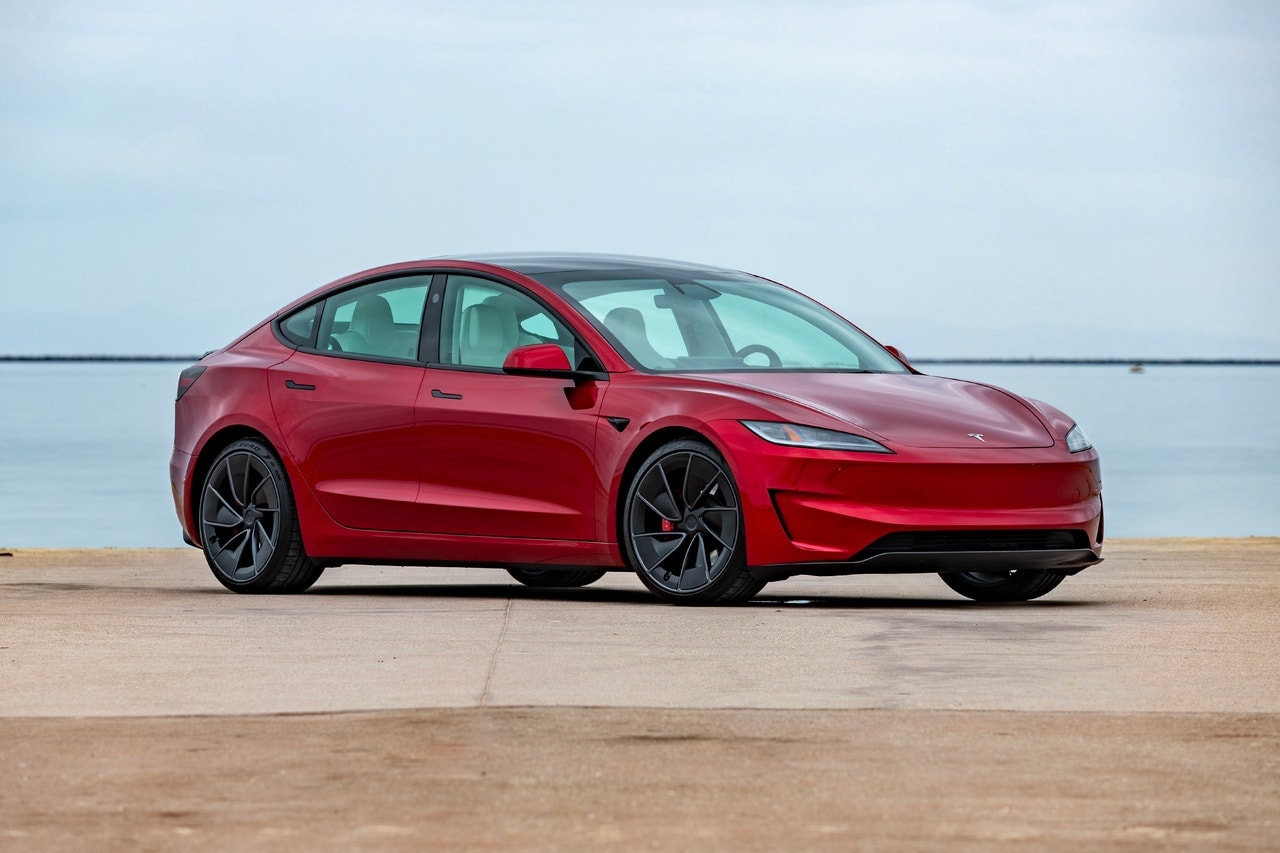
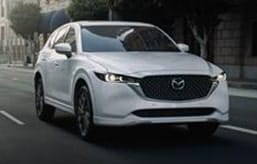
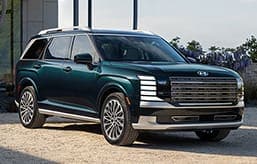

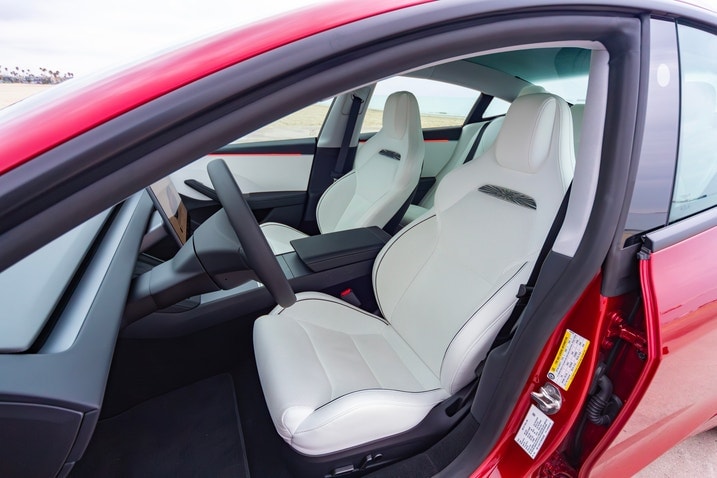
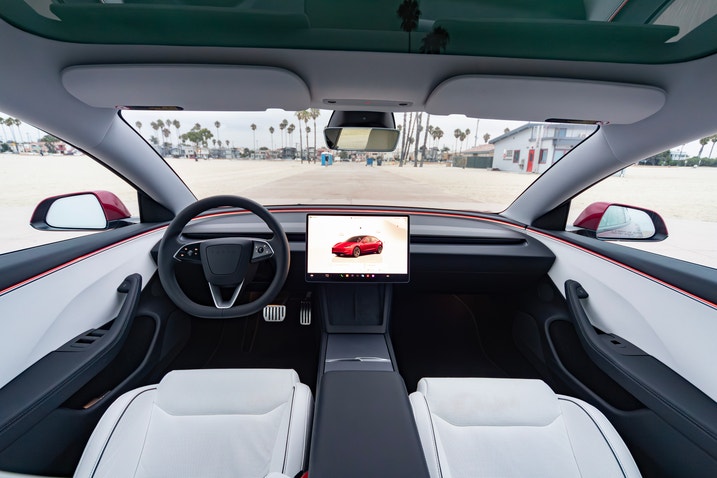
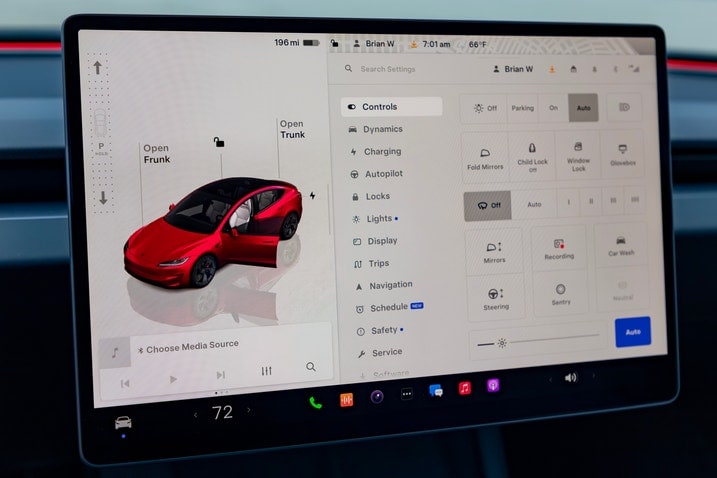


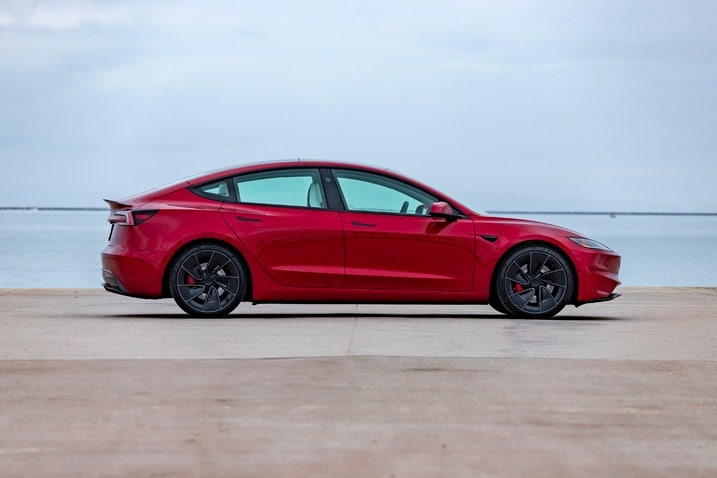
 by
by  edited by
edited by